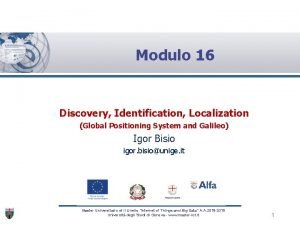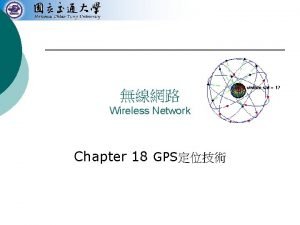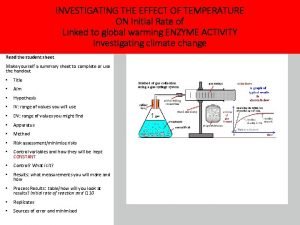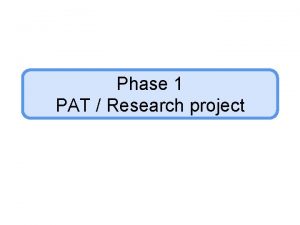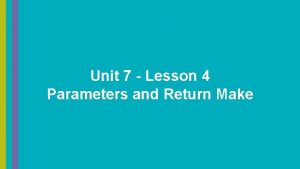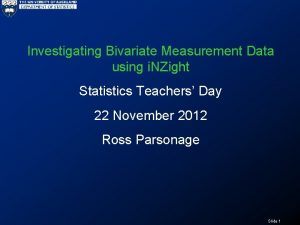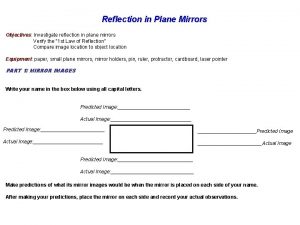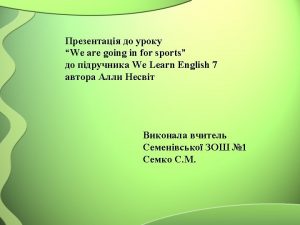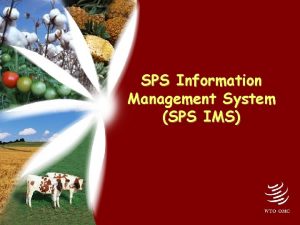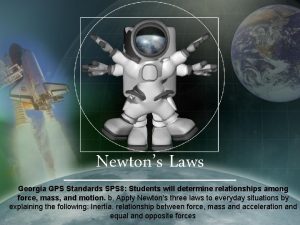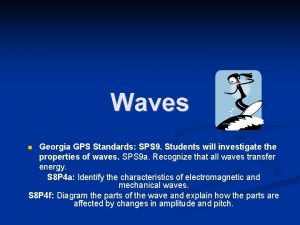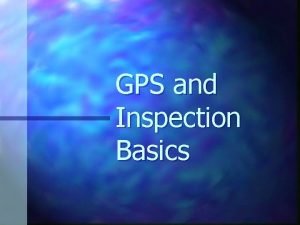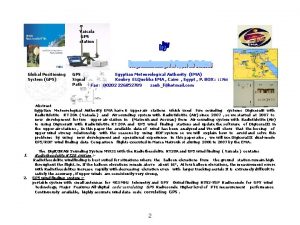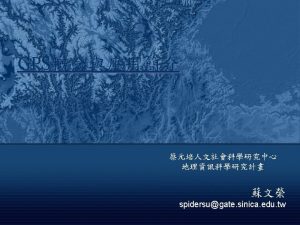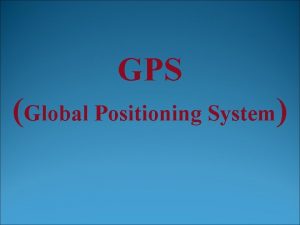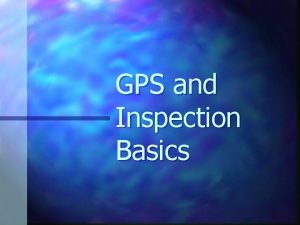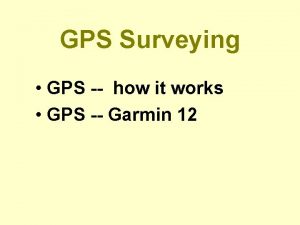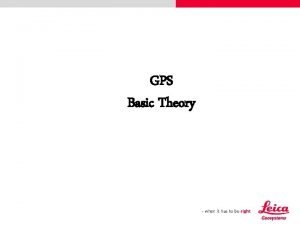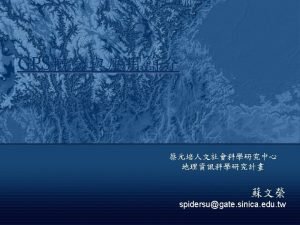Sound GPS Standards SPS 9 Students will investigate














- Slides: 14

Sound GPS Standards SPS 9. Students will investigate the properties of waves. b. Relate frequency and wavelength to the energy of different types of electromagnetic waves and mechanical waves. c. Compare and contrast the characteristics of electromagnetic and mechanical (sound) waves. e. Relate the speed of sound to different mediums. f. Explain the Doppler Effect in terms of everyday interactions. S 8 P 4 Students will explore the wave nature of sound and electromagnetic radiation. d. Describe how the behavior of waves is affected by medium (such as air, water, solids). e. Relate the properties of sound to everyday experiences. f. Diagram the parts of the wave and explain how the parts are affected by changes in amplitude and pitch.

Main Ideas o Sound is a wave o Sound travels faster in denser materials o Frequency determines pitch, measure in hertz o Intensity (amplitude) determines loudness, measured in decibels o Sound has many uses

Sound is a mechanical wave Sound waves: o Are longitudinal or compression waves o Transfer kinetic energy through matter in the form of waves o Vibrate particles o Are transported from one location to another by means of particle-to-particle interaction o Cannot travel through a vacuum

Sound Waves as Pressure Waves Sound waves are longitudinal waves. As they move they create pressure differences. Areas of compression increase pressure while rarefaction decreases pressure. This is very difficult to show clearly in a diagram, so often sound waves are shown as transverse waves.

Speed of sound waves depend on the medium The normal speed of sound in air is around 340 m/sec or 1100 ft/sec. Sound travels at different speeds depending on what it is traveling through. Of the three mediums (gas, liquid, and solid) sound waves travel: o the slowest through gases o faster through liquids o fastest through solids. Temperature also affects the speed of sound: fastest through higher temperatures. (Why? ) Sound waves are absorbed by soft mediums and reflected by hard mediums. Demonstration: Kinesthetic sound waves

Frequency determines pitch Frequency measures the number of waves passing a fixed point per second (wavelength) Pitch is the highness or lowness of a sound o High frequency = high pitch o Low (slow) frequency = low pitch - bass

Frequency can be measured Frequency is measured in Hertz—which means cycles per second. The abbreviation for Hertz is Hz. A normal human can hear between 20 Hz and 20, 000 Hz.

Amplitude determines loudness The intensity of a sound is the amount of energy a sound wave has. It is the amplitude of a sound wave. The amount of energy which is transferred to the medium is dependent on the wave amplitude. The greater the amplitude of vibrations of the particles of the medium, the greater the rate at which energy is transported. The intensity of the sound wave decreases with increasing distance from the source.

Intensity can be measured The amount of energy in a sound wave is measured in decibels (d. B). While the intensity of a sound is a very objective quantity which can be measured with sensitive instrumentation, the loudness of a sound is more of a subjective response which will vary with a number of factors. The intensity of a sound wave can be increased by amplification.

Wave interference and music Music is a mixture of sound waves which typically have whole number ratios between the frequencies associated with their notes. o Two sound waves with a 2: 1 frequency ratio is known as an octave. Beats are the periodic and repeating fluctuations heard in the intensity of a sound when two sound waves of very similar frequencies interfere with one another. Note that the red wave has two times the frequency of the blue wave and the interference of these two waves produces a resultant (in green) which has a periodic and repeating pattern.

Wave interference and music Sound waves mix and interfere producing sounds that are pleasant (or unpleasant) to our ears. Pleasing combinations of pure notes (pitches) are often called chords. Frequencies that mix in “unpleasant” ways are called dissonant frequencies. Voices and music are very complex, ever-changing mixtures of frequencies.

Doppler Effect The Doppler effect is a phenomenon observed whenever the source of waves is moving with respect to an observer. o There is an apparent upward shift in frequency for the observer when the source are approaching o There is an apparent downward shift in frequency for the observer when the source is receding.

Sound has many uses Ultra sound (frequencies above 20, 000 hertz) can be used to detect objects. Echolocation is when sound waves that are sent out and returned are interpreted (bats) Sonar is the use of echolocation to locate objects Sound waves can produce music Sound waves can be recorded and produced

Assignments o Tuning Fork Lab o Doppler Effect Worksheet o Explore: http: //www. philtulga. com/MSSActivities. html Write a summary of one or more activities.
 Modulo positioning
Modulo positioning Gps gps gps
Gps gps gps Investigate a factor affecting the initial rate of reaction
Investigate a factor affecting the initial rate of reaction How to investigate a problem
How to investigate a problem Lesson 4: parameters and return make
Lesson 4: parameters and return make Nzight
Nzight Oedipus the king review
Oedipus the king review Investigate reflection
Investigate reflection Why was rizal called the champion of filipino students?
Why was rizal called the champion of filipino students? “a sound mind is in a sound body”
“a sound mind is in a sound body” Speed of sound through steel
Speed of sound through steel Factors necessary for service standards are
Factors necessary for service standards are Dent sps bumc
Dent sps bumc Sps intranets
Sps intranets Sps cryogenics
Sps cryogenics
